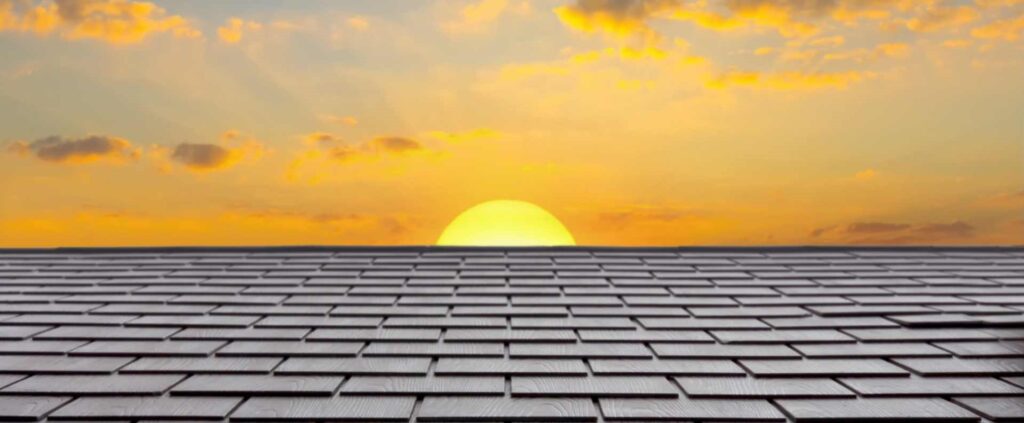Sustainable roofing is an important aspect of green building and can help reduce the environmental impact of buildings while also providing long-term cost savings.

Sustainable roofing refers to roofing materials and systems that are environmentally friendly and help reduce the carbon footprint of buildings.
Here are some examples of sustainable roofing:
- Metal roofing: Metal roofing is a durable and long-lasting option that is often made from recycled materials. It is also energy-efficient, reflecting sunlight and reducing the amount of heat absorbed by the building.
- Solar roofing: Solar roofing systems generate electricity from the sun, reducing the need for fossil fuels and lowering energy costs. They can be integrated into roofing materials or installed on top of existing roofs.
- Green roofing: Green roofing, also known as a living roof or eco-roof, is covered with vegetation and provides insulation, reduces the heat island effect, and improves air quality. It also absorbs rainwater, reducing the amount of runoff that can cause erosion and flooding.
- Cool roofing: Cool roofing materials are designed to reflect sunlight and absorb less heat than traditional roofing materials, reducing cooling costs and improving energy efficiency.
- Recycled roofing: Some roofing materials, such as shingles, can be made from recycled materials like rubber, plastic, or wood fibers. Using recycled materials helps reduce waste and the need for new resources.
- Reclaimed roofing: Reclaimed roofing involves salvaging and reusing old or discarded roofing materials. This reduces the need for new materials and can add character and charm to a building.
- Sustainable installation: Proper installation techniques, such as using energy-efficient insulation and sealing air leaks, can help reduce energy consumption and improve the overall sustainability of a building.




